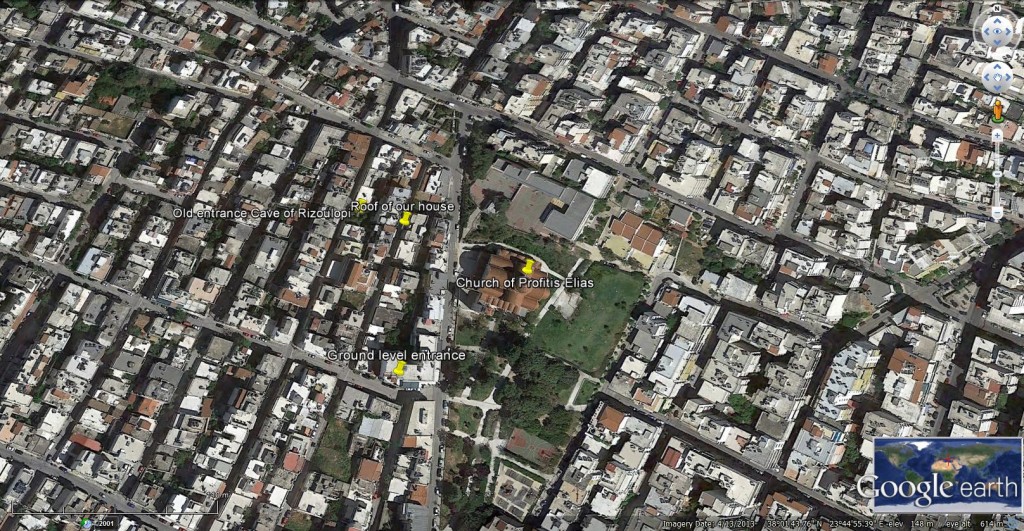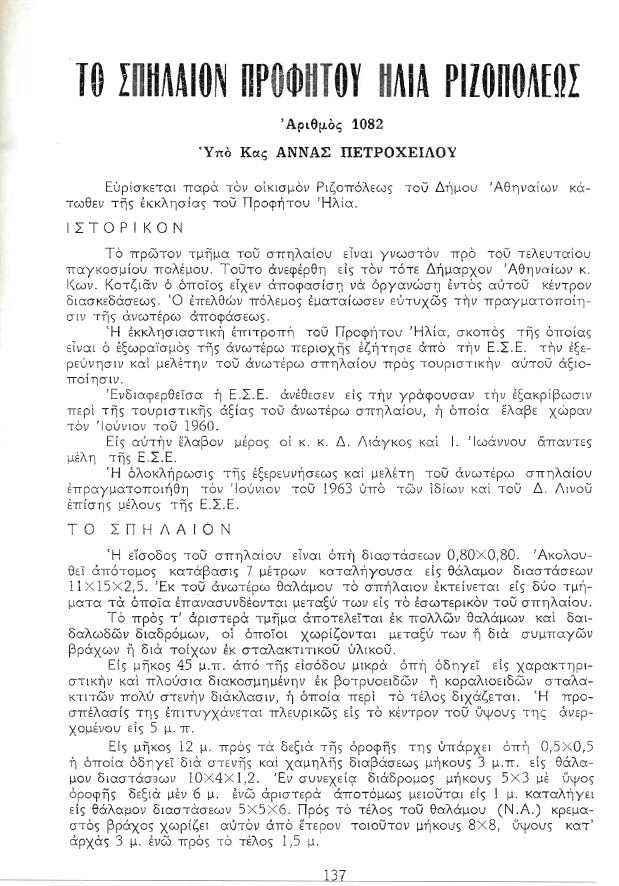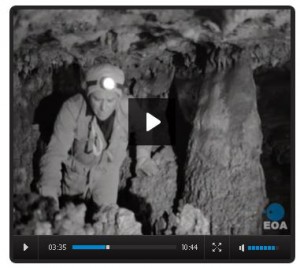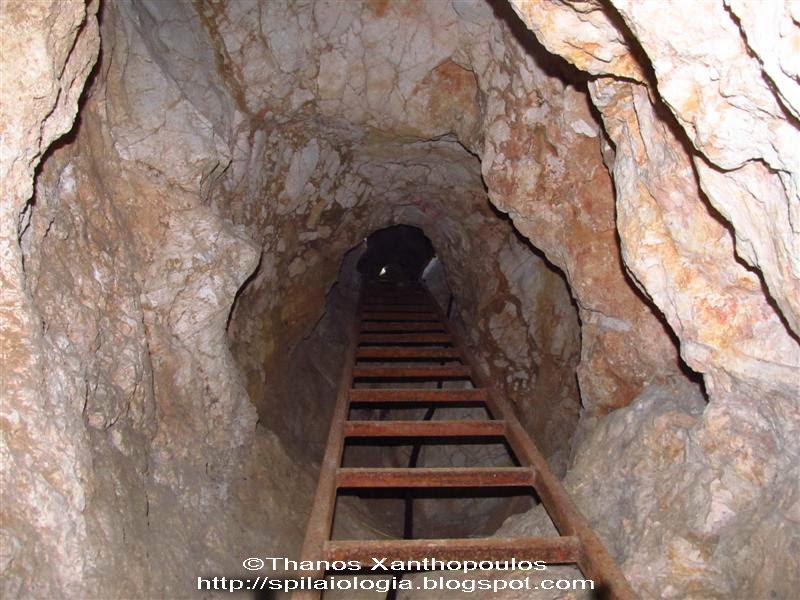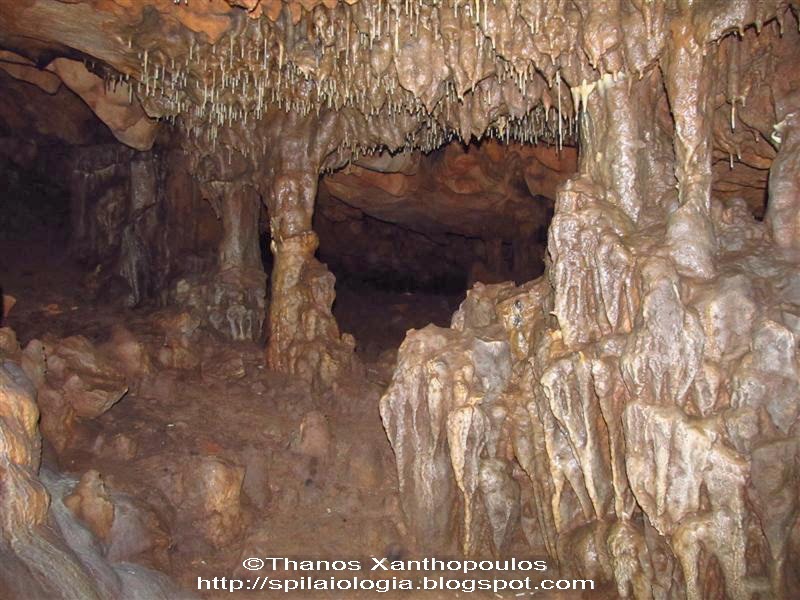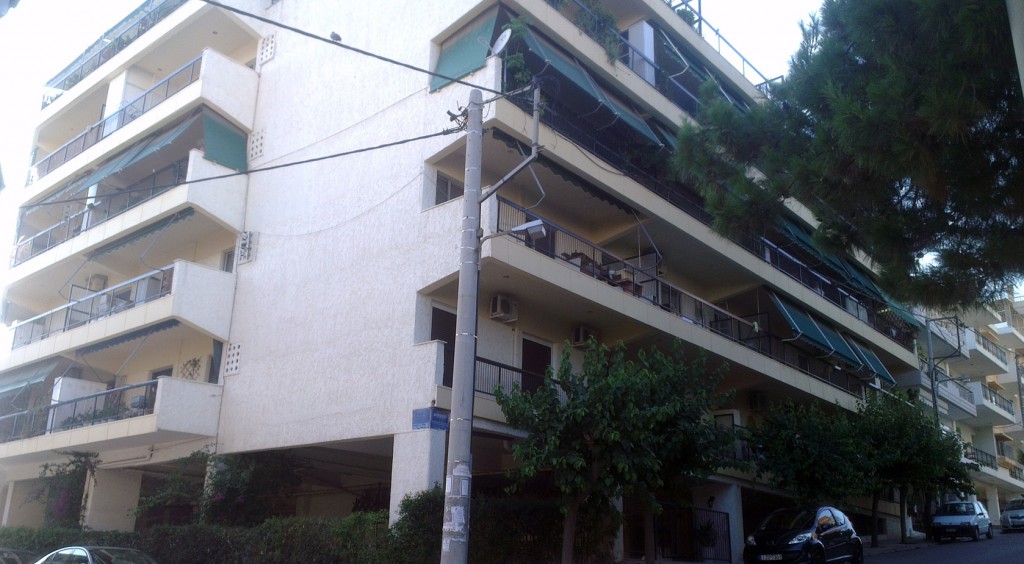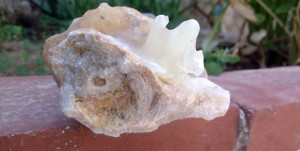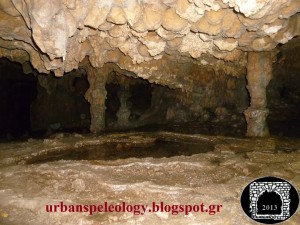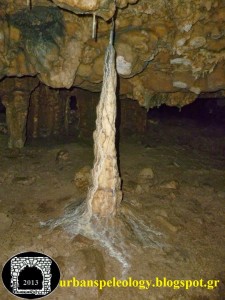Note: This article is now (28/9-2023) posted in the blog of the Greek Expedition. We have now also received some very good new about the cave: A speleologist, who recently visited cave Rizoupoli – in Athens and made measurements, informed me that the pollution has now decreased significantly. Nature has regenerated and self-healed surprisingly fast!”
In my neighborhood Rizoupoli in Athens, near the church of the Prophet Elijah, a large cave of 2,500 m² is spreading under the urban agglomerations. It is one of the largest known caves in the region of Attica. Inside the cave traces of human presence from the 5th millennium BC have been identified. It is also believed that it was used as one of the hideouts of the bandit Davelis, in 1800´s. Unfortunately, the cave has been severed damaged by the continuous building of the area in previous decades.The old entrance to the cave, situated on a fenced plot at Komanon street, is today sealed by the Greek Ministry of Culture.
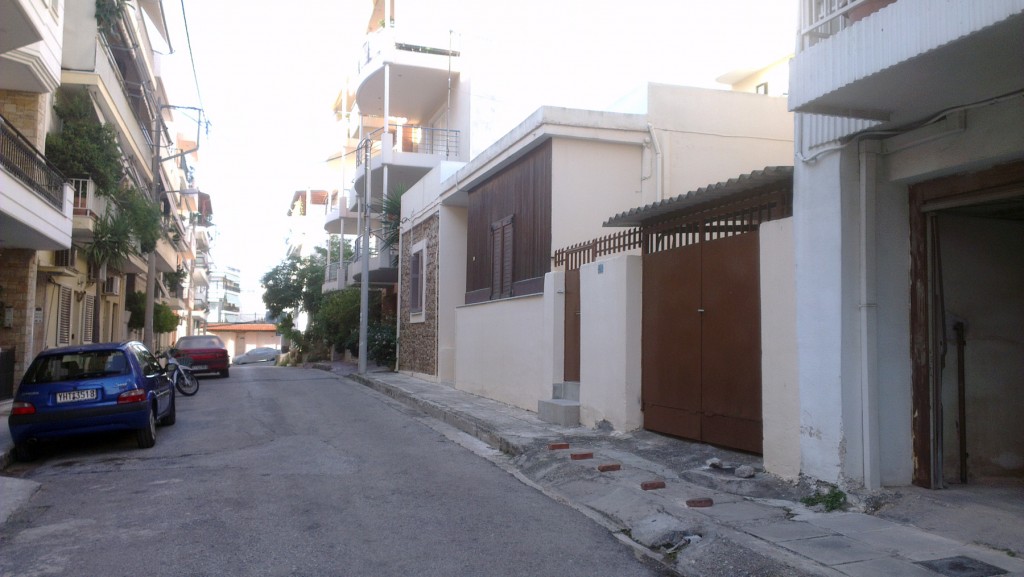
Large cave of 2500 sq m spreads under our house and neighborhood in Rizoupoli densely populated area
Cave of Rizoulopis – first explorations
The cave was explored for the first time in by legendary Greek speleologist Anna Petrocheilou in 1960. She was descending through the old – and by now the only entrance left, and made a detailed mapping of the cave´s complex structure.

Cave of Rizoupoli, map by Anna Petrocheilou, from her manuscript of 1964, page 19.
http://www.ese.edu.gr/media/deltia/vii/1964_5.pdf (in Greek)
It is interesting to compare the area of the cave from map above with Google Earth surface map of Rizoupoli – below. Click on images to see details.
Scientific report
In her report, published by the Hellenic Speleological Society, Anna Petrocheilou describes in detail the chambers and corridors and other complexities of the cave, she writes about the spectacular stalagmites and stalactites, as well as the various archaeological and paleontological findings . She writes further that the cave was known already in the 1930s and that the local authorities of that time wanted to turn it into a nightclub! For this reason they had already installed wide system of cables and lamps. The outbreak of the second world war foiled these grandiose plans (thankfully). The entire report can be found as pdf-file here (in Greek).
Archived video of Exploration
An old and very rare video document showing Anna Petrocheilou´s explorations can be found at the Hellenic National AudioVisual Archive. Click on picture below will take you to the video, choose sequence nr 3, Duration: 00:01:59:12 – 00:04:02:00.
Cave Interior
The pictures above and below are from the excellent blog of Greek speleologist Athanasios Xanthopoulos. He was exploring the cave recently and documented it with rich photographic material.
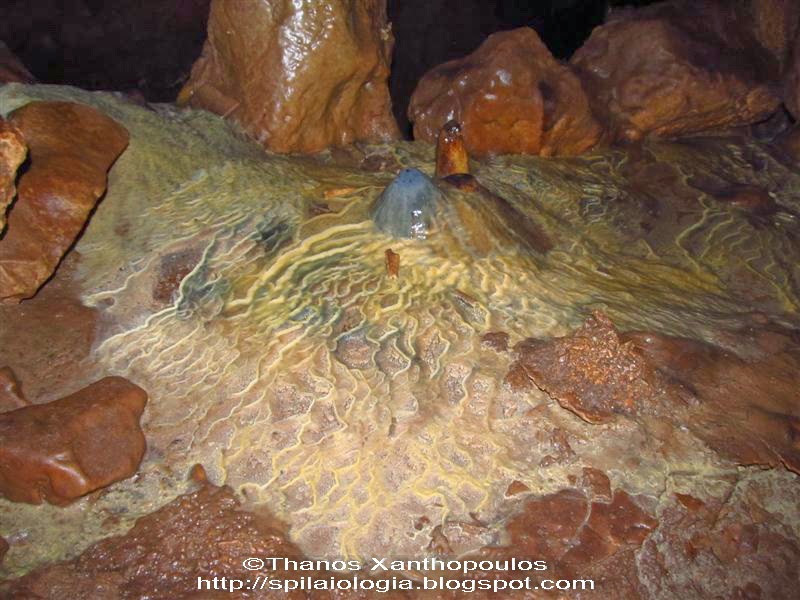
Beautiful but filthy water reflections, from the sewers that has been dripping in the cave for decades.
Ground level entrance – now build upon
In the 1970´s, a new ground level entrance was discovered in conjunction with the building of a huge house complex. Despite the recommendations of the scientists, permission to continue the building was granted by the authorities.
Before the destruction was completed, the entrance was open to the public a few days. The result was that almost all residents in the area entered the cave, and cut off small souvenirs to keep as decoration in their homes.
Recent explorations
Further explorations of the cave has recently been made, with special permissions from the Ministry of Culture. Except the above already stated, you can find rich and excellent photographic material of the cave posted by the Hellenic Urban Exploration & Speleology. Below, some pictures from their blog: http://urbanspeleology.blogspot.gr


